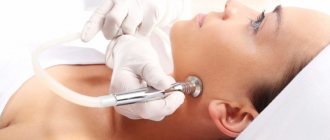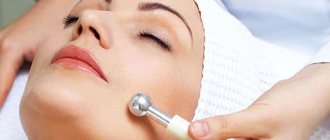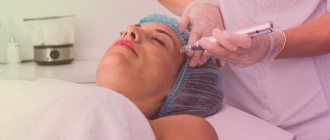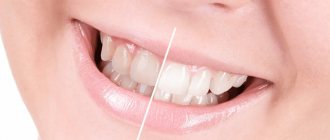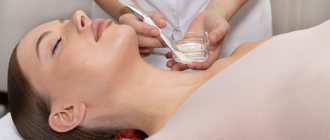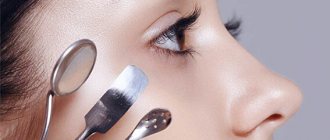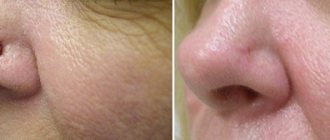How to prepare for gynecological cleansing
There are emergency and planned gynecological cleanings. If it is possible to prepare for surgery, then we are talking about a planned procedure.
Preparation involves the following steps:
- before the operation, be sure to undergo all the necessary examinations and laboratory tests to make sure there are no contraindications;
- it is necessary to completely shave the pubic and perineal area, and this is best done at home on your own;
- It is recommended to wear socks and a long T-shirt under the robe;
- which will be needed after surgery, and vaginal tampons are strictly prohibited;
- you should come to the operation on an empty stomach;
- after the operation, you must fully follow the doctor’s instructions;
- During the next month after the operation, sexual contact is excluded.
If the operation is performed by an experienced doctor, and the woman follows these simple rules, then, in fact, there should be no complications. Planned surgery is performed a few days before the onset of menstruation. If polyps are removed, then choose the day immediately after your period.
When surgery is performed as an emergency, for example due to bleeding, no preparation is required.
For a planned operation, choose a day when there are 5-6 days left before the onset of menstruation. This is necessary in order to minimize excessive bleeding during surgery and not cause too much disruption in the menstrual cycle. It will start around the right time.
Review and detailed analysis of all stages of comprehensive teeth cleaning
Professional teeth cleaning is a process of several stages, using certain technologies. Initially, the hygienist removes deposits that have hardened and formed a special stone on the teeth. Such deposits can be eliminated through the use of ultrasonic equipment.
Ultrasonic teeth cleaning
Tartar is hardened (or mineralized, in more professional terms) deposits on certain areas of the tooth.
Based on the area of formation, tartar is divided into supragingival and subgingival. The second type poses the greatest danger to humans, since it very often leads to gum inflammation in the future. Simple methods cannot get rid of such deposits, and only the use of ultrasonic equipment can eliminate them.
When performing cleaning, ultrasonic waves destroy deposits even in the most difficult to reach areas, and at the same time harmful microflora, which can lead to inflammation. Timely use of teeth cleaning will help avoid various dental problems. Such as, for example, periodontitis or periodontal disease.
Dentists use a special device (scaler) to solve these problems. It creates the necessary ultrasonic waves. It has a tip with a special attachment that transmits waves to the areas that need to be treated. It is also supplied with water or antiseptic. The dentist, using the device, can change the intensity of vibrations, selecting the most suitable mode for the patient.
How is tartar removed?
When performing such cleaning, it is destroyed due to the following:
- Ultrasound has a mechanical effect on hardened areas. The waves gently crush the stone into small pieces, which are easily removed with water or a special vacuum cleaner for the oral cavity;
- The simultaneous supply of liquid and ultrasound leads to the formation of a cavitation effect, during which a huge number of microbubbles are created. They blur plaque and speed up its separation from the tooth surface.
Important! Before it became possible to use ultrasound, tartar was removed exclusively with hand tools. Because of this, the procedure was very long and complicated. The dentist could easily injure the soft tissues, since the instrument used was extremely sharp, so the whole procedure could hardly be called pleasant. The most negative point in all this was that during the procedure, tooth enamel was significantly damaged. This was due to the fact that to remove plaque it was necessary to remove a layer of healthy tissue. After performing this type of cleaning, patients often experienced unpleasant dental hypersensitivity. The use of ultrasound allows you to avoid all these problems. Ultrasonic cleaning is absolutely safe; it does not injure the gums or mucous membranes.
It is very important that all procedures are carried out using modern equipment, without any disruptions in the process, only then the cleaning will be carried out professionally and will be safe. To do this, it is important that the hygienist has experience working with a scaler: the tip of the device should move only along areas of the tooth at a specific angle, and the cleaning itself should be accompanied by a significant supply of water to the teeth. It is very important to follow this process technology, since violations can damage the enamel or overheat the pulp, which can lead to various complications.
Our dental clinic carries out such cleaning only under the guidance of professional hygienists, as well as using modern equipment, so patients have nothing to fear and are guaranteed an impeccable result.
Important! A positive feature of using ultrasound, as opposed to other types of cleaning (with the exception of laser cleaning), is that it kills pathogenic microflora. For this reason, this procedure is highly recommended for patients with gum disease, because ultrasound kills pathogenic microflora in all areas, including periodontal pockets.
You should not be afraid of such cleaning, because it does not cause pain at all. If you are concerned that they may occur, you can ask the hygienist to pre-administer anesthesia. With this option there will definitely be no pain. Otherwise, ultrasonic cleaning is very fast. Up to 60 minutes, the exact time depends on how much deposits are observed in the oral area.
Important! If you have hypersensitivity or have a lot of deposits in the subgingival pockets, then there may be some pain during ultrasonic cleaning, and this is normal. In order to remove them, you need to administer anesthesia before cleaning. It can be administered not by injection, but by applying a local application. Therefore, there is no need to be afraid or panic.
Once this stage has been successfully completed, the hygienist moves on to the next stage and performs cleaning using Air Flow technology.
2.Air Flow
During the Air Flow teeth cleaning procedure, a special sandblasting device is used, which, using air and water, delivers a composition with abrasive particles to the enamel surface. The liquid is supplied in a powerful stream, which allows you to cleanse your teeth of bacteria and plaque in a short period of time. This method is effective not only for removing loose deposits, but also pigmented plaque that is firmly embedded in the enamel.
Air Flow is an innovative technology for cleaning teeth, which has a number of undeniable advantages:
- Air Flow easily fights plaque located in hard-to-reach areas of the oral cavity, which helps get rid of bad breath.
- The procedure can be performed without the use of anesthesia. It does not cause pain or discomfort. Mild pain may occur in patients with hypersensitivity.
- During the Air Flow procedure, aromatic liquids are used that can give freshness to your breath and turn cleaning into a pleasant, painless process.
- In liquids for the Air Flow procedure, soda is used, crushed to a powder state. This means that the risk of injury to tooth enamel during the cleaning process is completely eliminated.
- Air Flow effectively removes pigmented plaque. The procedure is indispensable for smokers and lovers of strong coffee and black tea. Excessive consumption of coffee and tobacco negatively affects the whiteness of the enamel, making it yellow. Air Flow quickly removes unpleasant plaque, restoring your teeth to their attractive appearance.
- During cleaning, do not use liquids with caustic chemical composition. This means that cleaning is safe and does not cause allergic reactions or other unpleasant consequences.
- The air-abrasive flow helps restore teeth to their natural white color and make your smile more attractive.
IMPORTANT: Using Air Flow technology, the doctor independently adjusts the power of the water-air flow onto the enamel surface, taking into account the individual characteristics of the patient’s teeth. The dentist takes into account the structure and condition of the enamel and whether there is hypersensitivity. This approach helps to achieve high efficiency and complete safety for patients.
Why does professional cleaning combine two techniques - Air Flow and ultrasound?
This question worries many patients. Hygienists explain that only a combination of two cleanings can achieve the desired result and carry out the procedure for cleansing the oral cavity from bacterial plaque at the proper level.
Air Flow cleaning works great at removing pigmented plaque that has become embedded in the pores of the enamel, but it will not be able to remove hard tartar, and is ineffective in the presence of mineralized deposits located in periodontal pockets.
Ultrasonic cleaning works well to remove tartar, but the metal tip of the scaler cannot penetrate the space between teeth (it is especially difficult to clean the interdental space in patients whose teeth are too close together). That is why these methods are used in combination. During professional cleaning, ultrasound and Air Flow methods are used.
IMPORTANT: Air Flow and ultrasonic cleaning can lighten tooth enamel to a natural level - by 2 tones. For those who want to achieve a more pronounced effect, after cleaning they should resort to a professional whitening procedure.
Teeth polishing is one of the mandatory stages of professional cleaning.
The third stage of brushing your teeth involves mandatory polishing of your teeth. Using polishing, the dentist eliminates all irregularities and microcracks in the enamel that form after cleaning the teeth of accumulated deposits. Professional teeth cleaning is impossible without polishing, since roughness will remain on the enamel, which promotes the adhesion of microparticles of food.
As a result, a layer of plaque forms again, which subsequently mineralizes and turns into tartar. Teeth polishing carried out after professional cleaning significantly slows down the process of plaque formation and keeps teeth shiny and smooth for a long time.
Teeth polishing after brushing is carried out using a special tool with several replaceable attachments. Each of them performs a specific task:
- Needle-shaped attachments are used to grind the surfaces of teeth and the gingival zone;
- Brushes help remove remaining plaque particles from rough areas of teeth;
- Crowns and dentures made of different materials are processed with different types of polishers;
- Discs allow you to give ideal smoothness and shine to cleaned teeth.
Treatment of interdental spaces after professional cleaning is carried out using special strips, as they easily fit into the narrow space between the teeth.
The process of polishing teeth after professional cleaning involves the use of not only tools, but also several types of pastes with varying degrees of abrasiveness. In addition to abrasive particles, polishing pastes contain fluorine and xylitol, which are involved in strengthening teeth.
Stages of teeth polishing after professional cleaning
- Polishing the outer surface of teeth using tools and paste;
- The treatment of flat surfaces is followed by polishing the fissures (tubercles) of the chewing teeth;
- Polishing the spaces between teeth with strips.
The average duration of teeth polishing performed after professional cleaning is 30-40 minutes. This does not require anesthesia, since the process of polishing teeth is a painless procedure that does not cause discomfort to the patient. Upon completion of polishing, the oral cavity must be rinsed with water, after which the dentist carries out the final stage of professional teeth cleaning - fluoridation.
4. Fluoridation is the final stage of professional teeth cleaning
Fluoridation is not a mandatory procedure after professional teeth cleaning, but you should not refuse it, as it combats increased sensitivity of teeth, strengthens enamel and prevents the occurrence of caries. Fluoridation involves treating tooth surfaces with fluorides.
Benefits of fluoridation:
- Normalizing the level of fluoride in the body, strengthening teeth and increasing the strength of enamel;
- Stops the process of leaching calcium, which is so important for dental health;
- Slowing down the proliferation of pathogenic bacteria in the oral cavity and the formation of plaque.
The process of fluoridation of teeth occurs as follows: the teeth are dried with an air stream directed at them. Next, using trays or a brush, a solution enriched with useful substances is applied to each tooth. Fluoridation is the final stage of professional teeth cleaning. But after the procedure, every dentist will definitely give recommendations on proper care of your teeth and oral cavity.
What tests are necessary before gynecological cleansing?
To determine contraindications, tests are performed before surgery. The doctor will definitely order tests such as:
- general and biochemical blood test;
- coagulogram (blood clotting test);
- blood test for hidden infections: HIV, hepatitis B and C, as well as syphilis;
- Analysis of urine;
- blood test for group and Rh factor;
- cytological examination of a cervical smear;
- vaginal smear.
These indicators are important in order to assess the degree of risk. A general blood test indicates the quantitative presence of red and white blood cells, hemoglobin level, and so on. Based on these indicators, one can judge inflammation and the scale of these processes, as well as the state of other organs in the body.
Checking your blood for HIV, syphilis and other pathogens is no less important. If there are hidden infections, this increases the risk of blood poisoning during the procedure. If the disease occurs in an acute stage, the operation is postponed and treatment is carried out.
If blood clotting is poor, surgical intervention is unlikely because it can lead to bleeding.
A vaginal smear gives an idea of inflammatory processes, as well as hidden infections, and determines the degree of cleanliness.
A cytological examination of the cervix indicates the presence of altered cells that appear during the onset of the oncological process.
Make an appointment and free consultation by calling +7(495) 256-49-52 or filling out the online form
| Select a clinic | Gynecologist appointment | Medical abortion | Surgical abortion |
What examination is carried out before gynecological cleansing?
Before gynecological curettage, the following studies are carried out:
- electrocardiogram (the operation requires anesthesia, and it affects the heart, so the heart must be normal, the type and dose of anesthesia is determined based on the condition of the heart);
- fluorography (to ensure the health of the lungs);
- ultrasound examination (shows the condition of the uterus, problem areas in its cavity, ectopic pregnancy, etc.).
Other types of research may be required, as well as consultation with specialists - an allergist, oncologist, cardiologist. Sometimes an MRI or CT scan is necessary.
Oscillatory movements
Ultrasonic facial cleansing (sometimes called ultrasonic peeling) is more superficial, but also less traumatic. It can be used as a preventative procedure or combined with another type of cleansing. The action of ultrasound is aimed at destroying everything unnecessary with high-frequency vibrations. In this way, dead skin cells are evacuated, acne is partially eliminated, and fine wrinkles are smoothed out. By the way, ultrasonic cleaning is great for skin that is starting to fade.
Stages of gynecological cleansing
The operation takes place in several stages. At the appointed time, the woman comes to the small operating room and sits in the gynecological chair. The anesthesiologist will ask questions about allergies to anesthesia, previous illnesses, and chronic diseases.
The following is the operation itself:
- The woman is given anesthesia (usually intravenously), which is enough for the entire period of the surgical intervention - 15-20 minutes.
- The patient does not feel pain and does not remember the manipulations that were performed on her. She sees pleasant dreams (modern anesthesia is used) and wakes up in the ward after the procedure;
- The doctor determines the position of the cervix using a speculum and then fixes it with special forceps. The uterus remains fixed during the operation.
- Then a special stick is inserted into the uterine cavity, which measures the length of the cavity.
- Next comes the stage of cervical dilatation. This is done gradually and carefully, using a dilator. The cervix should open to such an extent that you can freely pass a curette - an instrument similar to a spoon with a sharp edge and a long handle - inside. Curettage is performed using a curette.
- Once the cervical canal has opened to the desired size, the cleaning phase begins. A curette is inserted and the doctor uses it to carry out the main work. If the procedure is needed for diagnostic purposes, scrapings from the uterine mucosa are collected in a jar.
- To prevent the doctor from acting blindly, our clinic uses a modern method - hysteroscopy. A hysteroscope is inserted into the uterine cavity - this is a tube with a camera at the end. Using this device, the doctor sees the uterine cavity and all its walls. Cleaning is carried out under the control of a video camera.
- When the scraping is completed, the camera shows whether everything is done. If anything remains, repeated scraping is carried out until the result is what it should be.
- If some formations cannot be removed with a curette, then other instruments are introduced to remove the pathological areas. We are talking about polyps, synechiae, myomatous nodules growing into the uterine cavity.
- The next stage is completion of the work. After curettage, the forceps are removed from the cervix, and then the doctor treats the area of the cervix and vagina with an antiseptic solution. Ice is placed on the abdomen to stop bleeding in the uterine cavity.
- The patient is transferred to a ward, where she sleeps a little and wakes up. It is recommended to spend several hours in the ward or stay overnight. But if the woman feels normal, she can leave the room some time after waking up. The woman does not feel any pain.
Types of curettage
There are two main types of curettage commonly used:
- Separate. With this method, the cervical canal is first scraped out, and then the uterus itself. It makes it easier to make a correct diagnosis and is often combined with hysteroscopy, where an optical device is inserted into the uterus. This method makes the procedure safe and reduces the risk of complications
- The usual method of curettage is with surgical instruments. This manipulation is performed blindly and can cause damage to the uterus.
- Vacuum cleaning. This is a gentle method that minimizes trauma during intervention. It is used as a method of diagnosis, treatment or during abortion.
Recovery after gynecological cleansing
After the cleaning procedure, you should follow your doctor's recommendations. They are:
- do not use vaginal tampons in the first month;
- sexual intercourse should be avoided for 4 weeks;
- treat the genitals daily with antiseptic agents until the healing stage occurs;
- reduce physical activity, completely eliminate sports and heavy lifting;
- For the first 2-3 weeks, do not douche, visit saunas, or take baths.
Pastel mode is not necessary, but hypothermia, stress, and long walks should be avoided.
In general, the gynecological cleansing operation is one of the simplest and most comfortable among all that are available in gynecology. After 10 days, you can get the result of the biomaterial examination.
Answers to frequently asked questions:
- How to get tested for gynecological diseases?
- What diseases does a gynecologist treat?
- What tests can be done by a gynecologist?
- How to prepare for an appointment with a gynecologist?
- Where to go with a gynecological problem?
- What symptoms should you consult a gynecologist for?
- How often should you visit a gynecologist?
- What diagnostics can a gynecologist perform in your clinic?
- What gynecological equipment do you have in your clinic?
- Gynecological care in the clinic
- Gynecological care at home
- How to call a gynecologist at home?
- How to make an appointment with a gynecologist?
Woman's behavior after curettage
After curettage, a woman usually experiences spotting for several days, associated with hormonal changes in the body. Typically, menstruation begins after a month and may differ slightly from normal (be shorter, scantier, etc.)
Abdominal pain is natural after cleansing, and you should not be afraid of it. Usually, for pain in the lower abdomen, it is recommended to use painkillers.
After cleaning, a woman is recommended to observe a number of restrictions to prevent complications:
- Protect yourself from hypothermia and physical exertion.
- Avoid high temperatures (steam rooms, baths, saunas).
- Maintain genital hygiene.
- Give up sex for a month.
Doctors advise planning a pregnancy after cleansing no earlier than six months after an examination by a gynecologist.
Pregnancy immediately after curettage may result in miscarriage or intrauterine death.
In modern hospital conditions, a woman should absolutely not be afraid of cleaning. Thanks to this useful method, many gynecological pathologies can be identified and treated. Complications during the curettage procedure are extremely rare, and the intervention itself is painless for the patient.
Complication of gynecological cleansing
The professional actions of a doctor and anesthesiologist rarely lead to any complications.
However, there may be the following consequences:
- Perforation of the uterus (damage to the walls). It is theoretically possible to pierce the wall of an organ with any of the instruments used. Statistics show that they are more often perforated with a dilator or probe. This occurs when the cervix cannot dilate easily and excessive pressure is applied to the dilator. Or the structure of the uterine walls itself is loose and easily injured. If such an injury occurs, then thanks to special treatment, minor injuries heal on their own, and large ones are sutured.
- Cervical tear. If the fixing pliers fly off, a similar injury may occur. This is not always a doctor’s mistake; the cervix is sometimes loose, and it is difficult to hold the instrument—fixing forceps—on it. Treatment involves stitching a large tear, and a small one will heal on its own.
- Inflammation of the uterus. Such a complication is possible when there was inflammation, or violations of septic and antiseptic requirements were committed. For treatment, a course of antibiotics is prescribed. Typically, such a course is prescribed for the purpose of prevention.
- Hematometra. This is an accumulation of blood in the uterine cavity. Normally, after surgery, blood gradually comes out. But if a spasm of the cervix occurs, the blood remains inside and causes inflammation, which is accompanied by pain. This complication is treated therapeutically, and bougienage of the cervix may also be prescribed to relieve spasm.
- Damage to the mucous membrane. If the doctor scraped excessively and roughly, he could damage the germ layer of the mucous membrane. And this leads to the fact that the mucous membrane stops growing and regenerating. This is the worst complication because it cannot be treated.
- Incomplete removal of tumors and polyps. If something remains, then the pathological process continues. Requires re-cleaning. More often this happens when hysteroscopy is not used and curettage is performed blindly.
In general, such complications rarely occur if the operation is performed by competent and experienced doctors.
After surgery, a course of antibiotics is usually prescribed to prevent inflammation.
Spotting and spotting lasts from 3 to 10 days after surgery. If this does not happen, there is no discharge, you need to contact your doctor to prevent complications in the form of a hematomera. To prevent this complication, nosh-pa tablets may be prescribed.
After surgery, it is advisable to rest more and reduce physical activity to a minimum. You should be alert to such manifestations as increased body temperature, severe bleeding, severe pain in the pelvis, and a putrid smell of discharge.
Headaches, muscle pain, and panic attacks may result from the body's reaction to anesthesia.
Cleaning the uterus after bleeding
Bleeding from the uterus can occur for several reasons:
- Endometritis - if after an abortion the fertilized egg remains incompletely removed or pathogens such as streptococci, staphylococci, gonococci have entered.
- Bleeding due to hormonal imbalance;
- Hematometra is an accumulation of blood in the uterus due to cervical spasm.
Cleaning is carried out if there are fetal remains or polyps in the uterine cavity. The task of gynecological curettage is to stop bleeding and eliminate the causes that cause it. Otherwise, anemia gradually develops. The doctor prescribes hemostatic agents and drugs that promote uterine contraction.
If the pathology is infectious, a course of antibiotics is prescribed. And in case of hormonal disorders, consultation with an endocrinologist is necessary.
In addition to drug treatment, a nutritious diet is necessary, which contains foods that promote hematopoiesis. These are beef liver, buckwheat, red meat, pomegranate, beets, parsley.
Cleaning after a miscarriage
Miscarriage is artificial, with the help of medications, and natural - with a frozen pregnancy or cervical pathology.
Cleaning is usually carried out during a frozen pregnancy to prevent blood poisoning and bring out the dead embryo.
Gynecological cleansing during a miscarriage is the most effective and does not cause physical pain.
The operation is performed under general anesthesia. The steps of the procedure are:
- The gynecologist determines whether there are any contraindications to surgical intervention - infections, inflammation of the uterus or appendages, violation of the integrity of the lining of the uterus.
- The operation is performed on a gynecological chair after the administration of anesthesia.
- If anesthesia is contraindicated, local anesthesia may be used.
- The doctor dilates the uterus, inserts a curette into it, and cleanses it.
- It is important to completely remove the placenta and fertilized egg during surgery. After cleaning, the vagina and cervix are treated, and cold is applied to the stomach. After a few hours, the woman can leave the clinic.
Methods for diagnosing gynecological diseases:
- Calling a gynecologist to your home
- Diagnosis of gynecological diseases
- Diagnosis of sexually transmitted infections in women
- Colposcopy
- HCG tests
- Ultrasound during pregnancy
- Pelvic ultrasound
- Diagnosis of sexually transmitted diseases
- Fetal ultrasound
- Ultrasound of the mammary glands
- Ultrasound during pregnancy
- Transvaginal ultrasound
- Ultrasound of the ovaries
- Ultrasound of the uterus
- Cervical smear
- Vaginal smear
- Hormone tests
- Tests for sexually transmitted infections
Contraindications
For any surgical intervention, there are general contraindications in the form of infectious diseases with high fever, acute inflammation, and severe general ailments.
Curettage is also not performed for some gynecological diseases or conditions:
- normal pregnancy;
- ectopic pregnancy;
- malformations or infectious processes of the uterus;
- deforming tumors;
- less than 6 months after termination of pregnancy.
The doctor always decides about the possibility of curettage for a woman.
Cleaning after abortion
Sometimes after an abortion you have to resort to gynecological cleansing. This happens in the following situations:
- After a medical abortion, the embryo did not come out.
- After a vacuum abortion, part of the fetus remained inside.
- After a surgical abortion, the entire fertilized egg was not removed.
Usually, the remains of the embryo in the uterus make themselves known through bleeding and discharge similar to meat slop with an unpleasant odor. Body temperature also increases. This is a dangerous condition. Before gynecological cleansing, the patient is sent for a series of tests and laboratory tests. This is an ultrasound examination of the uterine cavity, a general blood test, a blood test for hidden infections, and a vaginal smear.
Description of the procedure
If the patient has been prescribed a cleaning, there is nothing surprising about this. With curettage, you can identify various diseases of the uterus, remove a pathological process, or stop bleeding that is debilitating for a woman. There are two types of scraping:
- diagnostic;
- medicinal.
The main function of the uterus is to bear the fetus. The inner uterine layer is called the endometrium and is a protective mucous membrane. Every month, cyclical changes occur in the uterus of women of reproductive age. At the same time, the endometrium grows, preparing for the possible fertilization of the egg and its consolidation. If pregnancy does not occur, the endometrial cells are shed, accompanied by menstruation.
Cleansing the uterus for the body looks like artificially induced menstruation. To do this, the uppermost uterine layer is removed using medical instruments or a vacuum system.
When curettage is performed correctly, only the functional uterine layer is removed, which is quickly restored. The basal uterine layer is not affected.
After cleaning, a layer of the endometrium (germ) remains in the uterus, which quickly grows and is restored. Recovery after cleansing occurs within the normal time frame for the monthly cycle.
The tissue obtained from scraping is sent for examination.
Why do gynecological cleansing?
Gynecological cleansing is prescribed in the following cases:
- prolonged bleeding with the presence of blood clots;
- bleeding between periods;
- incomplete removal of the fertilized egg during abortion;
- frozen pregnancy, miscarriage;
- infertility;
- endometriosis;
- polyps, fibroids;
- changes in the uterine mucosa, changes in the cervix.
Cleaning is also prescribed when it is necessary to obtain biomaterial for research - mucous membrane from the walls of the uterus.
Is pregnancy possible after cleansing?
After gynecological cleansing, the menstrual cycle is usually disrupted. Recovery takes 4-5 months.
Pregnancy can occur after the menstrual cycle normalizes - this is after about 4 months.
If the cleansing was carried out for the purpose of treating infertility, then after the operation the chances of getting pregnant increase many times over. If the patient plans to become pregnant after curettage, then this should be discussed with the attending doctor.
Common symptoms and manipulations in gynecology:
- Vaginal discharge
- Discharge from the urethra
- Discharge from the uterus
- Intrauterine device
- Female infertility
- Delay of menstruation
- Itching in the vagina
- Brown discharge
- Abortion
- Perineal pain
- Cervical erosion
- Abortion pills
- Vacuum abortion
- Medical abortion
- Surgical abortion
- Cervical biopsy
- Diagnostic curettage
- Folliculometry
- Make an appointment with a gynecologist
Vacuum gynecological cleaning
Vacuum aspiration is one of the most common methods of abortion. Conducted during pregnancy up to 15 weeks. Manual vacuum aspiration – up to 9 weeks.
The advantages are:
- conventional medical instruments that are inserted into the uterine cavity are not used, as a result, the organ is not at risk of injury;
- in the early stages does not require general anesthesia;
- does not cause much damage to hormonal levels, since pregnancy is still in the early stages of development;
- the operation lasts only 3-10 minutes;
- return to normal life occurs within a few hours:
- minimal risk of complications.
As a rule, in this case it does not take much time to restore health. However, the method also has contraindications, the main one being exceeding the permissible gestational age.
Sources
- Moore Z., McEvoy NL., Avsar P., McEvoy L., Curley G., O'Connor T., Budri A., Nugent L., Walsh S., Bourke F., Patton D. Facial pressure injuries and the COVID-19 pandemic: skin protection care to enhance staff safety in an acute hospital setting. // J Wound Care - 2022 - Vol30 - N3 - p.162-170; PMID:33729846
- Wang J., Kuesten C., Mayne J., Majmudar G., Pappas TN. Human Skin Gloss Perception Based on Texture Statistics. // IEEE Trans Image Process - 2022 - Vol30 - NNULL - p.3610-3622; PMID:33646950
- Aiello LM., Vergilio MM., Monteiro E Silva SA., Anselmo T., Leonardi GR. Skin effect of facial cleansing combined with an electric sonic device. // J Cosmet Dermatol - 2022 - Vol - NNULL - p.; PMID:33619809
- Erburu-Iriarte M., Rodrigo-Armenteros P., Oyarzun-Irazu I., Aranzabal-Alustiza I., Silvarrey-Rodriguez S., Antón-Méndez L., García-Moncó JC. Chronic severe methanol intoxication after repeated mask cleansing due to fear of COVID-19: A new risk of coronaphobia. // Eur J Neurol - 2022 - Vol - NNULL - p.; PMID:33599071
- Tang J., He H., Wan R., Yang Q., Luo H., Li L., Xiong L. Cellulose Nanocrystals for Skin Barrier Protection by Preparing a Versatile Foundation Liquid. // ACS Omega - 2022 - Vol6 - N4 - p.2906-2915; PMID:33553909
- Aksakal C. Maxillary sinus fungus ball as a cause for facial pain: Analysis of three cases. // Agri - 2022 - Vol32 - N4 - p.219-222; PMID:33398866
- Hosokawa K., Taima H., Kikuchi M., Tsuda H., Numano K., Takagi Y. Rubbing the skin when removing makeup cosmetics is a major factor that worsens skin conditions in atopic dermatitis patients. // J Cosmet Dermatol - 2022 - Vol - NNULL - p.; PMID:33040474
- Pastor-Nieto M.A., Gatica-Ortega M.E., Sánchez-Herreros C., Jiménez-Blázquez E., Martín-Fuentes A., Checa-Recio I., Cobo-Rodríguez P., Rodrigues-Figueira Y., Cuevas- Santos J., De-Eusebio-Murillo E. Calcium pantothenate is present in cosmetics and may cause allergic contact dermatitis. // Contact Dermatitis - 2021 - Vol84 - N3 - p.201-203; PMID:33015832
- Yao M., Ke L., Liu Y., Luo Z., Zhao B. Measurement of ozone deposition velocity onto human surfaces of Chinese residents and estimation of corresponding production of oxidation products. // Environ Pollut - 2022 - Vol266 - NPt 3 - p.115215; PMID:32711189
- Lassen CL., Meyer K., Bredthauer A., Klier TW. Facial and Oral Cross-Contamination of a 3-Year-Old Child With High Concentration of Capsaicin: A Case Report. // AA Pract - 2022 - Vol14 - N9 - p.e01258; PMID:32633926
What anesthesia is used before gynecological cleansing?
The curettage operation is quite painful and therefore requires anesthesia. During gynecological cleansing, three types of anesthesia can be used:
- Local anesthesia. The doctor makes injections that eliminate pain in the pelvic area. At the same time, the woman is aware of what is happening and hears the doctors. The disadvantages of such anesthesia are that the woman can still feel some sensations. This type of anesthesia is used if there are contraindications to general anesthesia.
- Sedation. This type of anesthesia is widely used. A special drug is injected into a vein. The patient is half asleep. At the same time, she can hear something, but feels absolutely nothing. This type of anesthesia does not turn off all important systems of the body, but dulls sensations. It is easy to recover from such anesthesia.
- Intravenous (general) anesthesia. This type of anesthesia requires the presence of an anesthesiologist and special equipment. During the operation, the patient is completely asleep, does not hear or feel anything. After the operation she returns to consciousness. It depends on an experienced anesthesiologist how easily a woman recovers from anesthesia. Modern types of intravenous anesthesia are used, the recovery from which is softer.
The doctor decides which anesthesia to prefer based on the individual characteristics of the woman’s body, the duration of pregnancy, and the complexity of the surgical intervention.
The benefits of professional teeth cleaning, its features
Professional teeth cleaning gets its name from the fact that it is carried out by a specialist, using professional tools and technologies that make it possible to qualitatively remove both light plaque and a more complex form - tartar. After the procedure, the teeth, gums, and subgingival pockets are completely freed from plaque, and the oral cavity is cleansed of pathogenic bacteria. At the same time, the teeth return to their beautiful, natural color and shine. Comprehensive teeth cleaning is one of the ways to take good care of the health and beauty of your teeth.
In what cases is it necessary to have professional teeth cleaning:
- If you want to keep your teeth beautiful, strong and healthy for a long time. Professional hygiene helps prevent the occurrence of caries and gum inflammation;
- After undergoing complete dental treatment to maintain the achieved positive result over time;
- Before the procedure of treatment, prosthetics, orthodontic dental treatment, implantation. Thanks to comprehensive cleaning before dental treatment, the condition of the gums improves, it becomes possible to detect caries in the early stages of development, whiten the enamel to a natural shade and simplify the process of installing fillings.
There are no contraindications to the procedure of professional teeth cleaning, but there are restrictions on some techniques, so only the attending dentist can correctly select the set of necessary procedures.
Next, information about the stages of professional teeth cleaning will be presented in more detail to make it more clear what benefits this procedure brings.
Gynecological cleansing during frozen pregnancy
Gynecological cleansing in the event of a frozen pregnancy is the most reliable way to remove a dead embryo. Used for many years all over the world. However, the appropriateness of this procedure is determined by the doctor.
A frozen pregnancy is also determined by a doctor based on indications.
Cleaning is carried out on a gynecological chair using general or local anesthesia. The patient does not feel pain or discomfort. She falls asleep during the procedure and wakes up in the ward after all the manipulations.
The doctor’s task is to remove the dead embryo before infection of the woman’s blood begins. Curettage is performed using a curette inserted into the uterine cavity.
Before the operation, the woman donates blood for analysis, and also undergoes an ultrasound examination, possibly MRI and fluorography.
After a high-quality operation, the woman’s health is completely restored within a month.
The rehabilitation period depends not only on the quality of the operation performed, but also on the state of health of the woman herself and on the duration of the frozen pregnancy. The shorter the period, the lower the risk of complications.
The benefits and harms of the procedure
Having understood the theory of professional teeth cleaning (what it is, what types there are, how the dentist does this procedure), the patient is naturally interested in the advantages and disadvantages. There are many more advantages, these include:
- aesthetically attractive appearance of rows after hygienic manipulations;
- elimination of unpleasant odor from the oral cavity due to getting rid of colonies of pathogenic microorganisms;
- an integrated approach (not only removes accumulated plaque, but also prevents the development of serious dental diseases);
- absence of pain (except when discomfort is associated with pathological conditions and other factors listed in the previous subsection).
Unfortunately, there are also negative sides:
- gum sensitivity increases;
- the risk of injury to the enamel layer increases;
- infection is possible, so some patients are prescribed antibacterial drugs after visiting a hygienist.
Where to do gynecological cleansing
Despite the simplicity of the operation, such intervention in the body should be entrusted to a trusted clinic and experienced doctors. In our medical institution, medical workers have extensive experience, all services are certified.
Advantages of choosing our clinic:
- Gynecological cleansing of any type of complexity is carried out;
- you can choose any convenient day, as we work seven days a week and holidays;
- the operating room is equipped with modern technology;
- its own laboratory facilities make it possible to obtain full tests, the results are accurate and fast;
- Individual approach, friendly atmosphere and comfortable conditions.
The doctor will also give comprehensive recommendations for successful rehabilitation after surgery. A modern method is used - hysteroscopy.
Which doctor performs gynecological cleansing?
Cleaning the uterus is performed by a gynecologist who has undergone appropriate training and is certified. In our clinic, such surgical interventions are performed by a gynecologist with extensive experience and an impeccable reputation.
Cleaning the uterus is also called curettage. This procedure is carried out for therapeutic or diagnostic purposes.
During the procedure, the doctor removes the top layer of the uterine mucosa for diagnostic testing, and also removes from the uterus the remains of the fertilized egg remaining during an incomplete abortion. Or polyps, fibroids and other tumors are removed.
An experienced gynecologist performs this operation completely painlessly and without complications.
Publication date 2019-11-06
Just no hands!
Dry facial cleansing is sometimes confused with chemical peeling. So, chemical peeling is a harsh procedure during which old skin peels off under the influence of drugs. During dry cleaning, substances penetrate the epidermis for slightly different purposes.
Chemical cleansing is divided into drug and enzymatic, depending on what the cosmetologist uses. For preparative cleaning, oleic, citric, malic, glycolic and lactic acids are used. For enzymatic cleaning, as you can easily guess from the name, enzymes are used: bromelain and papain.
Dry cleaning does not involve physical impact on the skin at all. To begin with, a cleansing mixture is applied to the face (most often with glycolic acid), then the actual cleaning begins with a more “caustic” composition. Its result is heating of the skin, as well as softening and partial dissolution of fatty cores. The procedure is completed with a soft, soothing mask.

